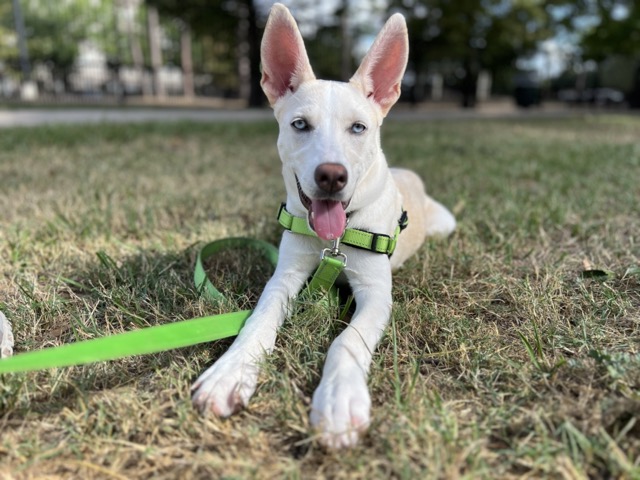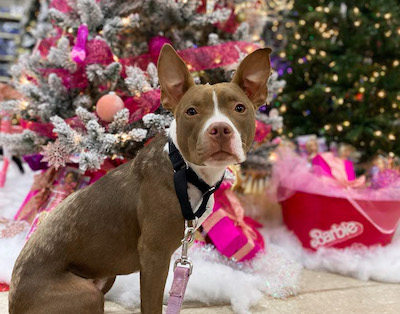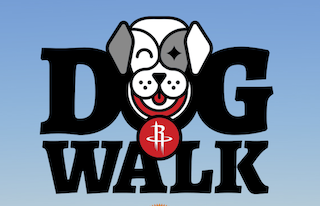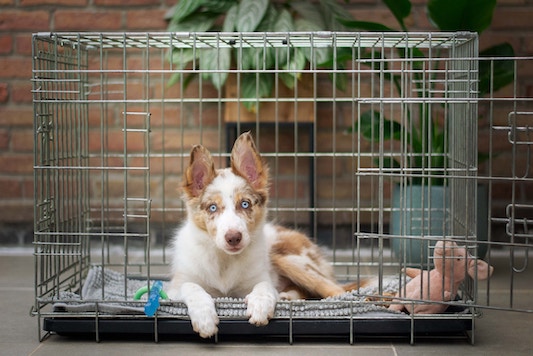Does your puppy need to be in a sit before they will go into the down position when prompted? If you are looking to eliminate the “sit” and get that immediate, beautiful bow to a down position, this blog is for you.
In most cases, “sit” is the first command most puppies learn. It is a relatively low-level behavior and one of the easier commands for a puppy to master. Your puppy is able to access reinforcement early and often with the sit command. We see quite often the next step is the owner asking the puppy for a down from that seated position by luring them down with a treat or a hand signal. We totally believe that there are many ways to achieve a down position, and this is one of them. What tends to happen once your puppy understands the down command if they are taught from a sit, is they will begin to need to sit first in order to achieve the down. This is what we call a behavior chain. The “sit” is serving as a signal for the down to be able to occur. So how do we unchain these?
We recommend if you haven’t taught down yet, start with our blog on how to teach down.

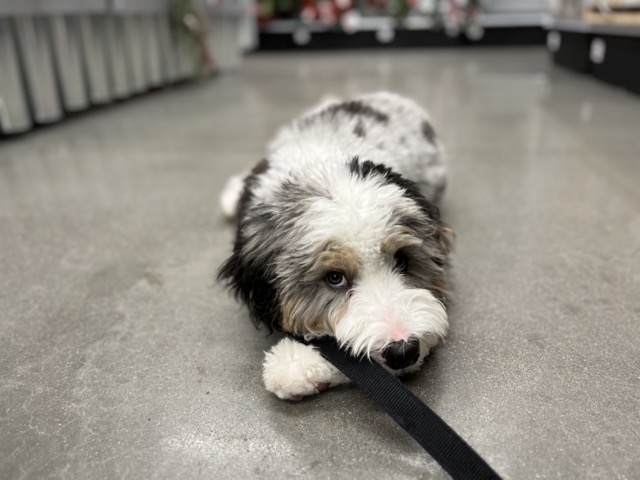
What you’ll need:
- Fitted collar
- 6ft leash
- Treats
Teach the bow to down

Your first goal in teaching a puppy to go directly into a bow position is to reinforce the bow position using shaping.
- Have your puppy standing directly in front of you.
- Take a treat directly in front of their nose, and lure them down and back under their chest towards their belly.
- Avoid bringing the treat towards you, as this is going to cause them to take a step forward or stand back up.
- If your puppy bows and then lays all the way to the ground, as soon as their belly lays flat to the ground say “good” and feed.
- Immediately say “free” and then start with the lure in front of the nose going down again.
- Practice 10-15 reps in a row.
Keep it fun and use lots of praise! As they are successful, add in that verbal “down” prompt, and reward them only when that bow to down occurs.
You may need to start by sitting on the floor with them. You can stand up once your puppy is mastering the bow to down.
Troubleshooting:
My puppy will go into a bow but won’t lay flat on the ground:
Start by rewarding any level of the bow, even if it is just a small one. Continue to encourage your puppy to bow, and continue to reward for any level of the bow, encouraging a little more of a bow using a lure each time. You can feed multiple treats as well, one for the first bow, and then use another in your hand to encourage your puppy to continue bowing. Be sure you are luring down and back under them. Allow them to continue to take or lick the treats as they continue to bow down. You can fade out the number of treats as they achieve the bow more readily.
My puppy won’t go into a bow position at all:
Sit on the floor and make a tunnel with your leg to help encourage a bow. You will sit with the leg closest to the puppy bent with your knee to the sky, and your other leg straight out. Lure your puppy under your leg. If your puppy seems nervous about going under your leg, start by rewarding small bows or movements under. Even just a curious nose under is great. Move the treat further back under your leg, maybe even setting the treat on the ground so that your puppy can grab it. It’s okay if your puppy comes back out immediately. Continue to shape up the bow with treats until you can keep the food in your hand and your puppy bows flat to the grown. You can begin to slowly move your puppy away from your knee until your puppy is bowing without needing to go under the knee. You can also use a chair or something of the like to encourage your puppy to bow instead of a knee.
My puppy still continues to try to sit:
Use the leash and every time your puppy sits, gently use the leash to get them out of the sitting position and try again. If you are trying to eliminate the sit chain, do not reward your puppy if they sit and then down. Be sure to deliver a reward every time they go into a down without the sit first.
My puppy is getting really distracted and is blowing me off:
- Make sure your puppy is hungry before starting training sessions.
- Increase the value of the treats you are using to something super tasty they don’t normally get versus kibble.
- Start in a quiet environment.
- Use a secondary prompt by looking at the ground while you verbally prompt. Bend at the waist and possibly step backward if needed. Fade the secondary out so that your puppy doesn’t rely on it later on.
If these adjustments don’t work, try tethering your puppy to something they cannot move using the leash. Back up, away from your puppy to where they are at the end of the tether and there is a small amount of pressure on the leash. Try to encourage the bow from there. The tension on the end of the leash may help to encourage the down and will prevent your puppy from running off and getting distracted.
If you try out these tips, we’d love to see your results! Tag us on Instagram at @beyondthedogtexas. If you are looking for more one-on-one help, contact your local behavior consultant and trainer today!
